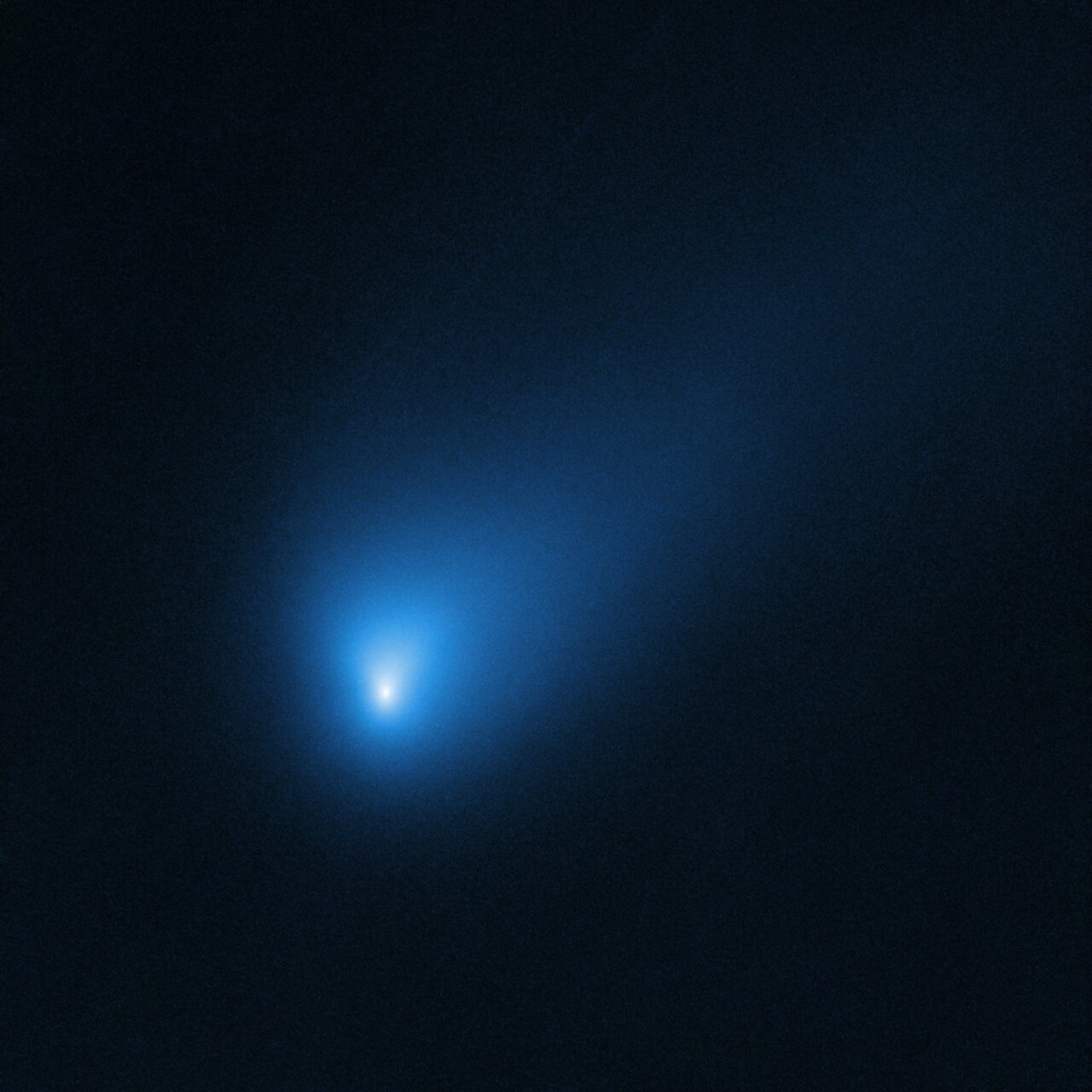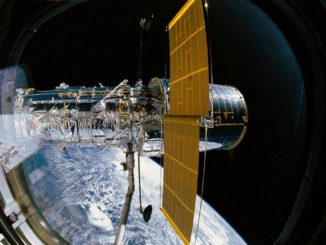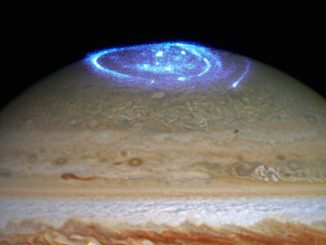
The Hubble Space Telescope has returned an image of a comet that originated outside our solar system, providing astronomers with their best view yet of an interstellar visitor at a distance of 260 million miles from Earth.
Hubble observed Comet 2I/Borisov on Oct. 12 as the object barreled through the solar system at a speed of some 110,000 mph (49 kilometers per second). The Hubble image revealed a bright cloud of dust around the object’s nucleus, an appearance astronomers say is remarkably similar to comets resident in our own solar system.
Scientists have confirmed the object originated beyond our solar system by tracking its movement, allowing experts to propagate its course back in time. Comet 2I/Borisov is following a hyperbolic trajectory, and will head back into interstellar space after making its closest approach to the sun Dec. 7, at a distance twice as far from the sun as Earth, according to NASA.
“Though another star system could be quite different from our own, the fact that the comet’s properties appear to be very similar to those of the solar system’s building blocks is very remarkable,” said Amaya Moro-Martin of the Space Telescope Science Institute in Baltimore.
Comet 2I/Borisov is the second interstellar object detected passing through our solar system, an occurrence long predicted by astronomers.
An object named ʻOumuamua, or 1I/2017 U1, was discovered in October 2017, weeks after it make its closest pass to the sun. Scientists confirmed ʻOumuamua came from interstellar space, and it had an unusual elongated shape, like a cigar or a frisbee.
“Whereas ‘Oumuamua appeared to be a rock, Borisov is really active, more like a normal comet. It’s a puzzle why these two are so different,” said David Jewitt of the University of California, Los Angeles, leader of the Hubble team who observed the comet.
All comets studied before 2I/Borisov came from the Kuiper Belt, a ring of icy debris beyond Neptune’s orbit, or from the Oort Cloud, a spherical shell of icy objects located between 200 billion miles (320 billion kilometers) and 9 trillion miles (14 trillion kilometers) from the sun.
Gennady Borisov, a Crimean amateur astronomer, discovered the comet Aug. 30. After confirming the comet’s interstellar origin, professional astronomers used ground-based observatories for detailed observations.
In a study published Oct. 14 in Nature Astronomy, Polish astronomers wrote that the comet has a reddish hue and a solid nucleus about 1 kilometer, or 3,300 feet, in diameter.
“Make of this what you will, but based on these initial characteristics, this object appears indistinguishable from the native solar system comets,” said Piotr Guzik of the Jagiellonian University, who led the study.
“We immediately noticed the familiar coma and tail that were not seen around ‘Oumuamua,” said Michal Drahus of the Jagiellonian University, who co-led the study with Guzik. “This is really cool because it means that our new visitor is one of these mythical and never-before-seen ‘real’ interstellar comets.”
The comet is getting brighter as it travels closer to the sun, so additional observations could reveal more details. Astronomers plan to observe the comet in the coming months with ground-based telescopes and Hubble.
“We can safely say that research on this body will be transformative for planetary astronomy and a milestone for astronomy in general,” Guzik said in a statement.
Although astronomers have detected only two interstellar objects traveling through the solar system, scientists believe such interlopers are regular visitors. But they are often dim and move extremely fast, making their detection difficult.
“New comets are always unpredictable,” said Max Mutchler, another member of the Hubble observing team. “They sometimes brighten suddenly or even begin to fragment as they are exposed to the intense heat of the Sun for the first time. Hubble is poised to monitor whatever happens next with its superior sensitivity and resolution.”
Email the author.
Follow Stephen Clark on Twitter: @StephenClark1.



